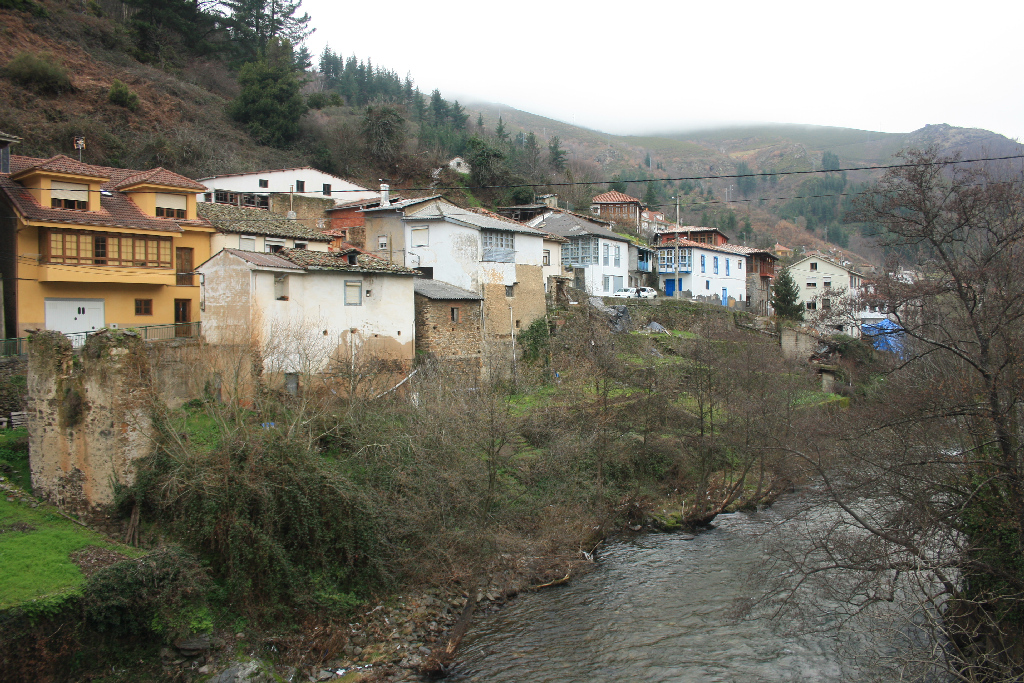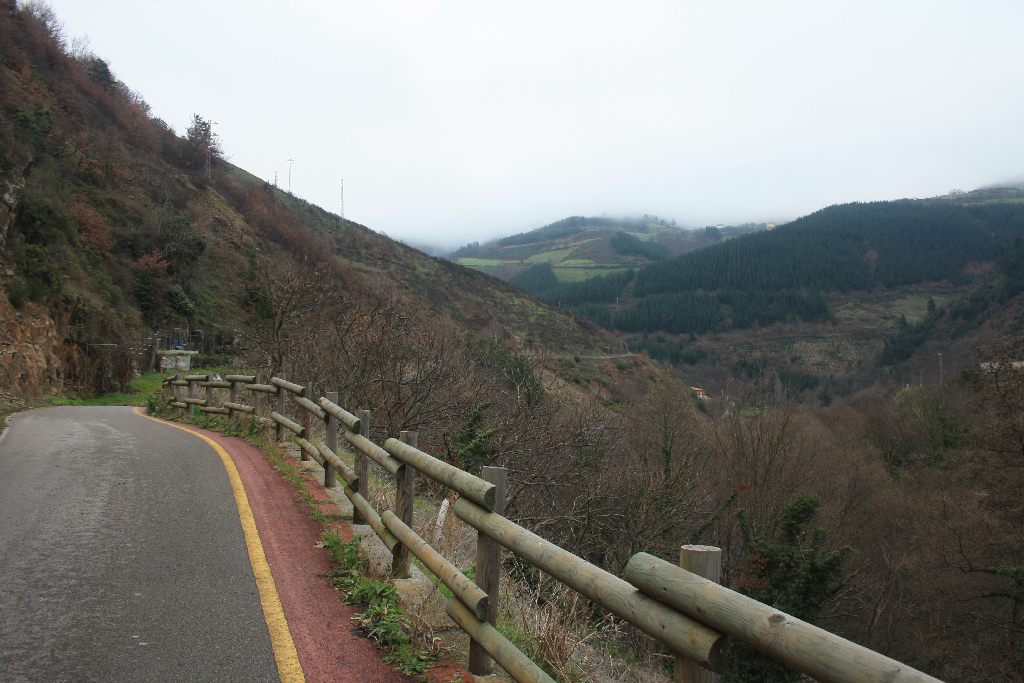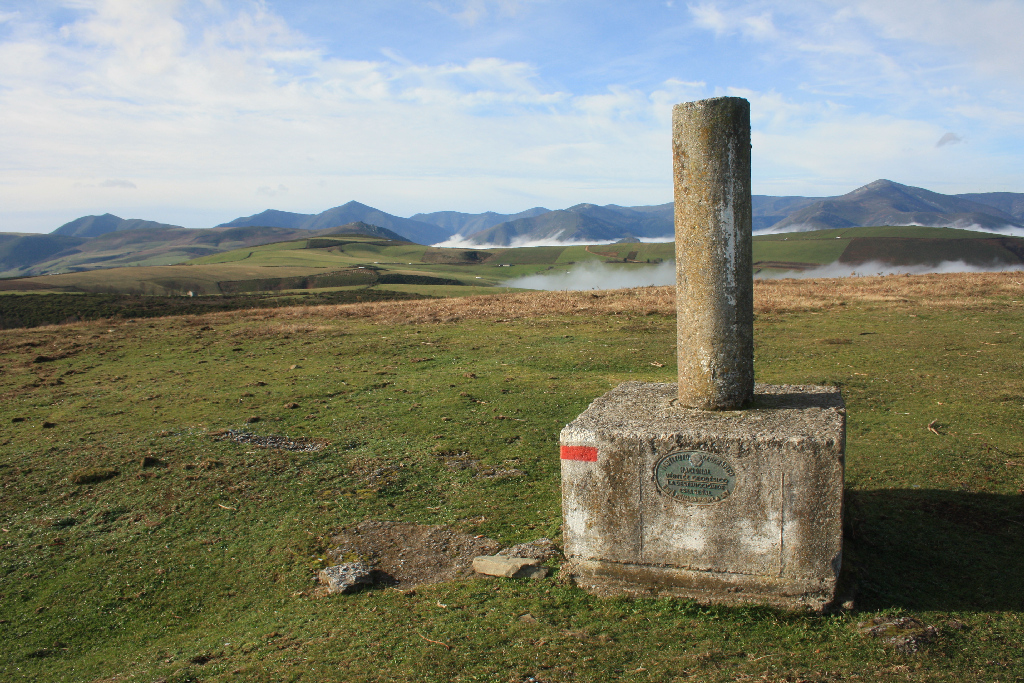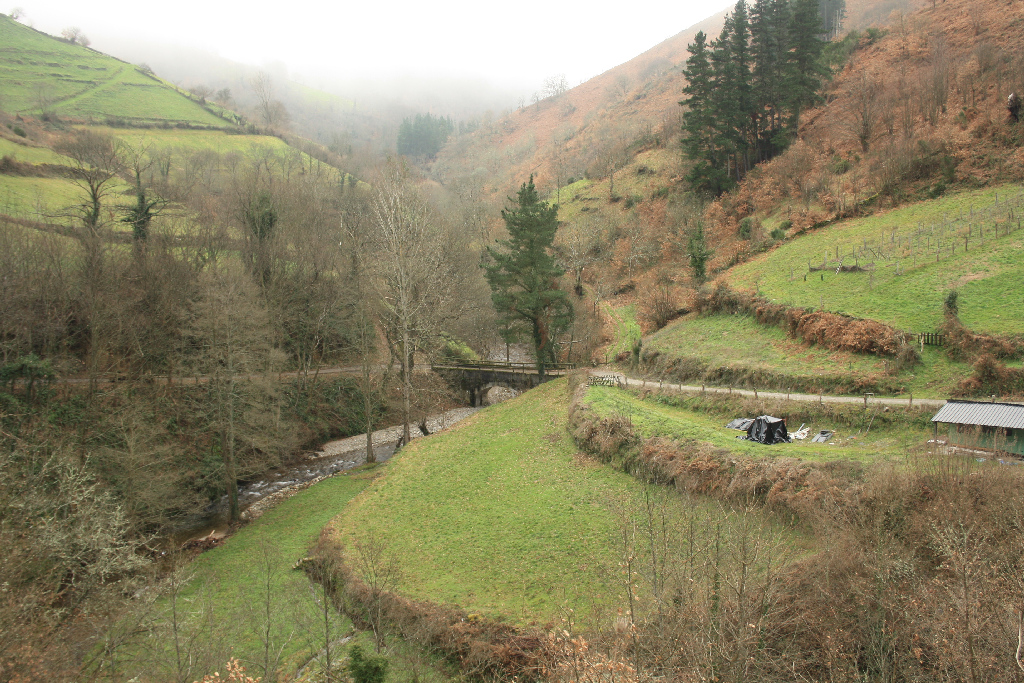- Home
- Rural Development
- Nature Trails
- Nature Trails
- Northwest Sector
- Cordillera Cantábrica. Asturias interior
Stage 23: Corias - Besullo
Description

Towards Irondo Valley
The Nature Trail crosses the River Narcea by the medieval bridge of Corias, heads southwest towards Cangas del Narcea County through Sierra de Santa Isabel, and descends to Irondo River Valley on the opposite side of the mountains to arrive at Besullo, one of the most emblematic villages of the county.
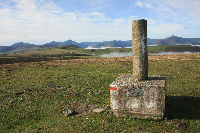
Near the Monastery of San Juan Bautista, the Nature Trail leaves Corias behind, crossing the medieval bridge over the River Narcea. It then continues for a few kilometres along a paved road that runs parallel to the river towards the town of Retuertas, where the route begins a moderate climb to the town of Santa Ana, with beautiful views of Sierra de la Pillarma, populated with hardwood and coniferous forests.
Once in the village of Santa Ana, the route winds through the paved streets of the town to Alto de Santa Ana, where it crosses the road, and continues straight ahead along a gravel track to the left of a few houses.
The route then heads south, across Sierra de Santa Isabel, along a dirt track that traverses through meadows and pastures. Beautiful panoramic views of the valleys of the rivers Irondo and Pomar, and of Sierra de Valledor can be seen from the top of the mountain.
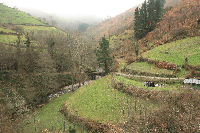
Immediately after passing through the Latrene geodesic vertex, the route turns right and begins to descend a steep slope, through farms, meadows and flatlands, to the rural town of Irrondo de Besullo.
The last part of this section descends to the Irondo River Valley by road traversing various villages. At Irrondo de Besullo, the path comes onto a road, crosses the Arganza River by a bridge, and continues its descent along a paved road towards the village of Besullo, the final destination of this section.
Sites of interest
Profile
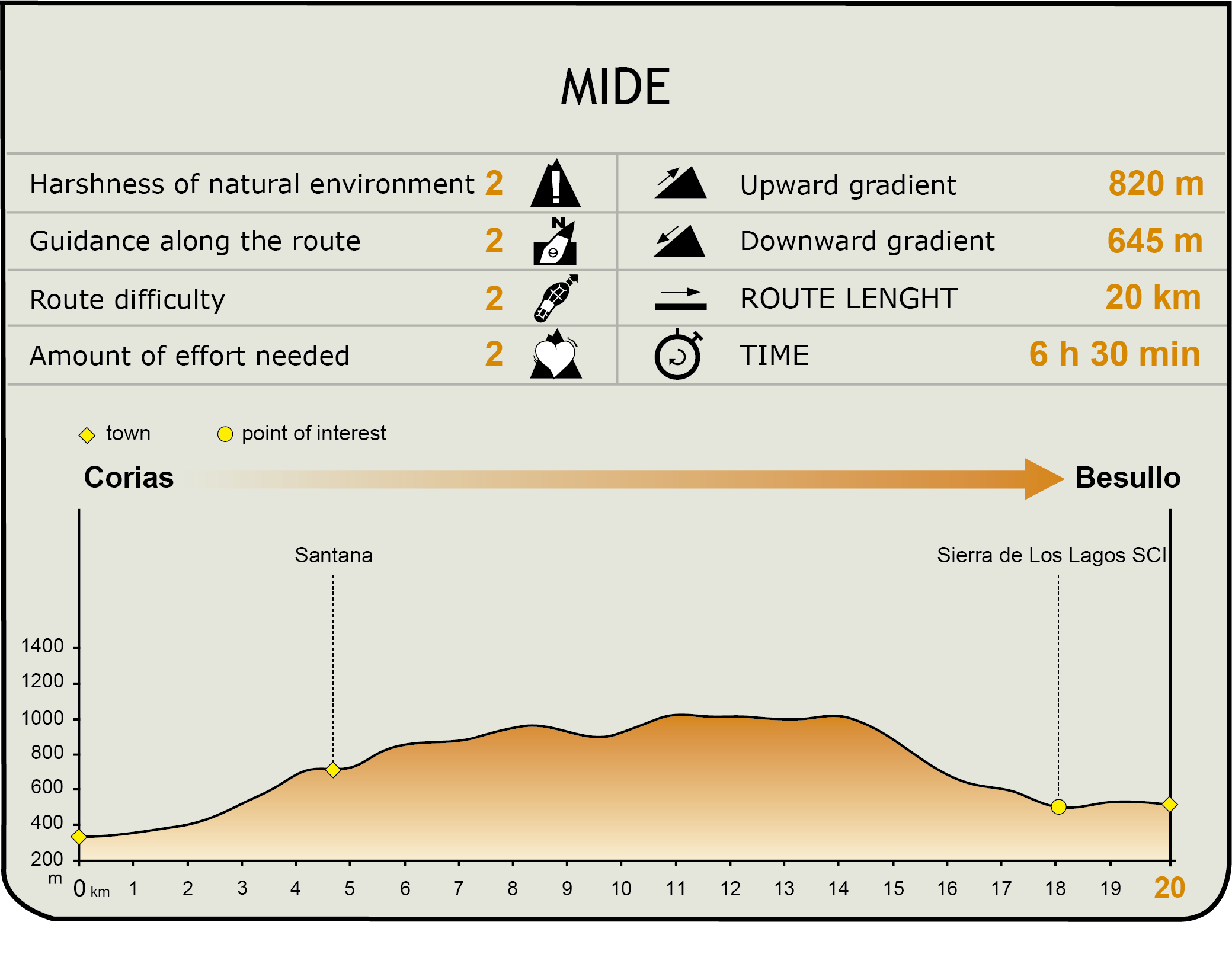
MIDE (Method for the Information of Excursions)
Featured
Further information
Corias Bridge
Near the Monastery of San Juan Bautista of Corias, is a medieval bridge with a single arch that spans the River Narcea. It appears to be of Roman origin, although it was rebuilt in 1571. This old bridge is the most direct path for the inhabitants of Corias to cross the River Narcea, which divides the village. Formerly, the Camino Real that came from Leitariegos towards Tineo and Allande used this bridge to reach El Puelo.
Latrene geodesic vertex
A geodesic vertex is a geographic survey point that is generally located at elevations, and are representative of a particular geographical area. They point to specific geographic co-ordinates and are called a vertex because they form part of a network of triangles. They are typically located in high, open places, from where other geodesic vertexes of the network can be detected. They are marked with a cylindrical column on a square concrete base.
The Latrene geodesic vertex is located at the southern end of Sierra de Santa Ana, at an altitude of 1,036.6 m above sea level. Its National Geographic Institute number is 7579. It was erected on August 26, 1983.
Besullo
The birthplace of the playwright Alejandro Casona, Besullo was declared the most beautiful village of Asturias in 1968. The house of Llano Flórez, “La Casona”, built in 1897, is located in Besullo. This building has close ties to the playwright, who immortalised it in his works.
Blacksmithing was a traditional trade in Besullo. In its heyday, the town had four “mazos” (hammers) and an important blacksmith guild. Today, the recently renovated El Mazo d'Abaxu is open to visitors. It is a hydraulic mechanism that channels water from the river Pomar to a “banzáu” (weir) attached to a stone building, where the water-powered mallet or hammer strikes the iron.
The church of San Martín, one of many religious buildings in Besullo, was donated by King Alphonse III and Queen Jimena to the Church of Oviedo in 905. It was the former family monastery founded in the eleventh century (1044) over Romanesque remains of which little remains today. It has a single nave with a barrel vault roof. Only the apse (Chapel of Santo Domingo) and the transept are Romanesque. Everything else is contemporary. Inside are baroque altarpieces from the second half of the seventeenth century.
In the lower part of town stands the Chapel of the Veigas, which has a domed portico on semicircular arches. Inside is an 18th century baroque altarpiece and gallery. Besullo has an interesting tradition. The image of Mary Magdalene is taken from her chapel so she can kiss the image of Nuestra Señora de las Veigas, which is located in the neighbouring chapel. This is repeated on two successive days. The first procession is taken out by women (Peña El Furmiento), on August 15th, amidst loud cheers at the end. The second, takes place the next day, and starts with a climb up to the chapel of La Magdalena. After Mass, the event continues with a procession around the village, accompanied by music, food and games.
